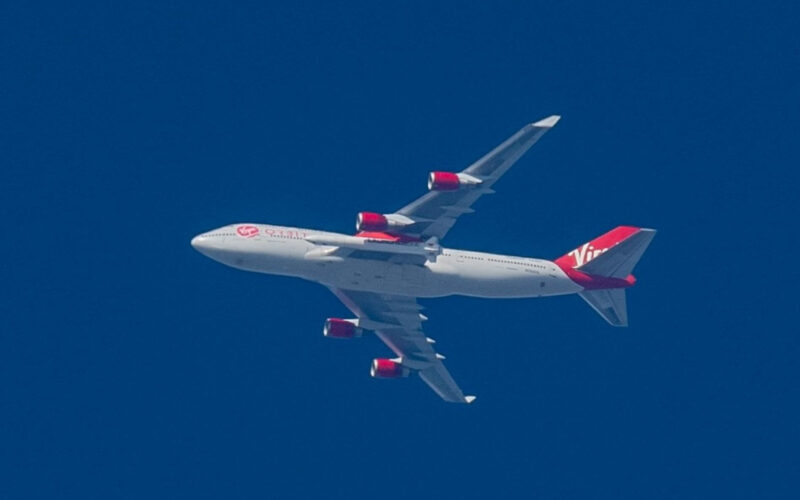Reusable rockets are all the rage nowadays. But there is another, much less talked-about solution for a cheap hop to orbit: aerial launch. The fact that quite often the vehicle used for it is your average airliner adds yet another layer of charm to both civil aviation and space flight.
The idea behind the concept is not new. Aerial launch of some kind of aircraft was practiced at the dawn of aviation, while many well-known records were achieved with planes that did not take off from a runway, but were launched from an airborne plane.
A modified Boeing B-52 Stratofortress thus became the first flying spaceport, after in 1963 it was used to launch a X-15 rocket plane that reached the altitude over 100 kilometers, crossing the Kármán line – the most widely recognized boundary of space. The aircraft itself was way too slow and flew too low to enter a stable orbit, a prerequisite for staying up there instead of falling back to Earth.
The first aerial launch-to-orbit flight happened in 1990, when one of the same B-52s that carried X-15s was used to launch a Northrop Grumman Pegasus, a real three-stage space rocket.
On that day, not only the story of aerial space launches, but the commercial space launches began. Pegasus became the first commercially developed vehicle to deliver a payload into space. While it was much smaller than, say, SpaceX Falcon-9, it proved that such an endeavor is possible. On top of that, not all missions need a multi-ton capability, as small rockets remain a lucrative market in itself.
Renting old strategic bombers from NASA is expensive though. Hence, in 1994, Pegasus developers at Orbital Sciences (later acquired by Northrop Grumman) bought a 1974-vintage Lockheed L-1011 Tristar and have been using it to launch their rockets ever since.
So, we enter the era of satellite-launching airliners.
There are roughly three kinds of aerial launch platforms. Converted military bombers, such as the B-52, is one of them. Effective, but less than optimal.
The second kind is dedicated platforms, such as Scaled Composites White Knights (One and Two), as well as the Stratolaunch. They can be built and modified according to the needs of the program, but are extremely expensive.
The third kind is the cheapest: converted civilian airplanes, primarily, the largest kind of them – wide-body airliners. The Stratolaunch fits into this category half-way, as two Boeing 747s were cannibalized to create it, providing engines, flight decks, landing gear, and other systems.
An Orbital Science Tristar, nicknamed Stargazer, became the first and the most prolific platform of this kind. Its use saw a decline in 2020, but Northrop Grumman said that there were no plans to retire the system and it would probably be launching satellites for years to come.
Virgin Orbit became the second company to develop their own platform of this type. An ex-Virgin Atlantic Boeing 747-400, named Cosmic Girl, was converted in 2017, and conducted the first launch of Virgin’s (VAH) own LauncherOne rocket on January 17, 2021.
Slightly larger and heavier than the Pegasus, the LaucherOne is supposed to be almost four times cheaper, at just $12 million per launch. Virgin (VAH) boasts that they are ready to build 24 rockets per year, becoming one of the most prolific rocket manufacturers.
Why would companies want to do that, instead of using the usual multi-stage rocket?
LauncherOne or Pegasus can carry one-twentieth of a payload of, say, a Falcon 9. Price per launch is just over five times smaller, price per kilogram thus being significantly higher.
But they offer other advantages, such as unrivalled mobility. The launch can be conducted from any place in the world, at any time. There is no need to build or rent an expensive launch platform and stick to a rigid schedule. Weather, the primary source of delays for rocket launches, can be completely avoided as the launch itself is conducted from the stratosphere.
Furthermore, in theory – according to some research – aerial launches even have a potential of being cheaper per kilogram than regular launches, but some rather strict criteria have to be met for that.
All of this gave the way for a number of ventures promising similar services. In fact, the legendary Antonov An-225 Mriya, the heaviest aircraft on the planet, was planned as a possible platform for aerial launches of Soviet spaceplanes back in the 80s.
A decade later, projects offering to use old Soviet supersonic bombers, American transport planes, or even special futuristic Mach 4-capable drones were popping up in the US, Germany, Britain, and Russia.
There are numerous research articles evaluating those concepts and identifying many of them as highly unlikely to succeed, either due to technological or budgetary limitations. Amongst the more realistic ones, offers to use decommissioned airliners as a launch platform prevail.
Boeing, in fact, was one of the pioneers of such a way. Even before the Stargazer, it worked on several ideas that saw the 747 carrying space rockets on the back, below the wing, or towed behind the plane. There was also a proposal by now-bankrupt Swiss Space Systems, which would have used the Airbus A300 in a similar role. A couple of other companies – Russian, Chinese and German ones – planned to resurrect the second, unfinished airframe of the An-225 for aerial rocket launches.
While most of the projects have stalled through the years, both the Stargazer and the Cosmic Girl succeeded. But there seems to be a lack of new ones, and even the Stratolaunch is struggling after SpaceX stepped out of the project.
It is highly doubtful that in the coming years a new airliner-turned-space rocket launcher project will be completed, especially if Virgin’s (VAH) project delivers on its promise. Hence, only those who had a chance to fly on the Virgin Atlantic 747 or pre-conversion Orbital Sciences Tristar can consider themselves as having travelled onboard the first stage of a space rocket

